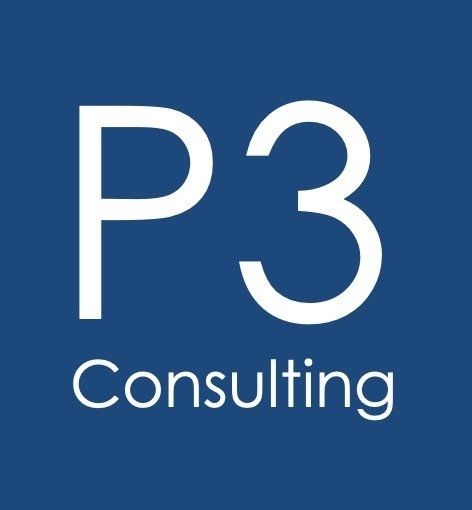Am I charging too much or too little for my product or service?

There are several factors to consider when determining pricing for a product or service. Here are some key steps to follow:
1. Determine your costs: The first step in determining pricing is to understand the costs associated with your product or service. This includes both direct costs (e.g., materials, labor) and indirect costs (e.g., overhead, marketing). If you are providing a service or consulting, don't overlook the time spent each week preparing, traveling and fulfilling your clients needs.
2. Determine the value to the customer: It's important to understand the value that your product or service provides to the customer. This will help you to determine how much the customer is willing to pay for it.
3. Consider the competition: Research the prices of similar products or services offered by competitors. This will give you an idea of the going rate in the market and help you to determine a competitive price.
4. Set pricing objectives: Determine what you want to achieve with your pricing. For example, you may want to maximize profits, increase market share, or enter a new market. Strategies often include lower margins in exchange for greater marketshare and exponential growth. One critical delivery challenge in this scenario can be scaleability on the supply chain side.
5. Consider pricing strategies: There are various pricing strategies you can use, such as cost-based pricing (setting the price based on the cost of the product or service), value-based pricing (setting the price based on the perceived value to the customer), or competition-based pricing (setting the price based on the prices of competitors).
6. Test and adjust: It's important to test and adjust your pricing to see what works best for your business. This may involve adjusting the price up or down and monitoring the impact on sales and profits. Once you are established, the perfect pricing generates a 50/50 win rate.
By considering these factors, you can determine a pricing strategy that is both competitive and profitable for your business. Having an objective third party run a competitive analysis could generate six-figures of additional revenue for your business.
Share

Things to consider when hiring the "best" sales person for your business. Most hiring managers or business owners want to find that "A Player" but they don't have the budget for it.... Here are a few key components to look for in your next sales hire: 1) Demonstrated success in previous roles with a similar sales cycle. * Short sales cycles are generally transactional and low value - churn and burn * Long sales cycles (+12 months) require patience, strategic thinking and professional persistence. Transactional reps struggle in this role. 2) Industry experience is a plus, but don't overlook the opportunity to bring in someone from an adjacent industry that can up skill the entire team with a modified sales approach. * Hiring someone for their contact list can be a huge disappointment. * Ask questions around how they built those relationships, focus on the process and if they can do the same for your business. * Hire someone that is hungry and sees the vast opportunity in front of them rather than how many people they already know. What happens when they exhaust their list of contacts? 3) Hunters vs Farmers * Hunters love to slay dragons and find those new logos. They are less interested in managing established relationships. This isn't a challenge or rewarding for them. Pay for performance, they thrive on those big commission checks! * Farmers typically don't want to cold call or carry the burden of a quota. They are really good at building rapport, maintaining current clients and expanding your installed base. Their compensation should be tied to maintaining a book of business. ** It is common for business owners to hire farmers and wonder why they aren't hunting for new business. Farmers don't want to hunt and hunters don't want to farm. Pick your poison... 4) Finding the "X" factor * Some of the best hire's I've made throughout my career have been ambitious individuals with clearly defined goals (personal, professional and financial). If you ask them where they want to be 12-36 months from now and they don't have an answer, I'd proceed with caution. If they can spell out in great detail how much money they want/need to make to accomplish "X" in the next 2-3 years the better! * A Players don't stick around long if their compensation doesn't align with the promises you make during the interview process. The list could go on and on. There is a lot of great talent out there right now. Focus on candidates that have clear personal, professional and financial goals, demonstrated success in a similar sales cycle (KEY), and have a hunter OR farmer mentality depending on the role you need to fill.

You've spent years, and what felt like an eternity, getting your product ready for market. "If you build it, they will come"...they say! We got FDA clearance and made our big announcement. The phone lines are open, and our team is ready to answer the calls. Why aren't the phones ringing? Where are all of the sales? Creating a new market with a breakthrough technology is no small feat. Forget the pro forma calculated TAM, how much product-market-fit research was done before you built the product? Are you solving a specific problem that has truly never been solved? Is it even a problem? In the US healthcare economy, you must have compelling evidence in three major categories: Clinical, Operational and Financial return on investment. One of the most common, and often overlooked, requirements is strong clinical evidence that has been demonstrated in multiple studies to produce a similar outcome. This can take 2-3 years to complete and have peer-reviewed and published. Whatever you do, please do not skip this step! You can thank us later. How can a hospital operationalize the product to improve their workflow and reduce clinician burnout? Do you have just in time distributors that deliver products multiple times per day or week? Is there room in the storage closet, nursing carts, on the IV pole, for another standalone monitor, etc.? Are you replacing something they are already using or made a significant investment procuring? Who is responsible for getting the product to the patient, nursing unit, or bedside? How much training is involved for the staff to use the product? These are all things to consider and have answers for before you start to scale. The holy grail in healthcare: are you adding cost per patient or reducing cost per patient? Part of your clinical studies and research should include a repeatable financial story as well as the clinical impact. Does your product reduce costs, and can you prove it? If your product costs more than the current solution, what is the ROI for the health system? Do the math and make sure it's airtight, not a loose possibility. If you can back up your clinical, operational and financial claims with multiple, repeatable studies, you will reduce your adoption curve. One final word of caution: the US Healthcare sales process will take 12-18 months. Happy selling.

There can be a variety of reasons why sales reps appear lost or may not be hitting their goals. Here are a few potential reasons: 1. Insufficient training or resources: Sales reps may not be hitting their goals if they do not have the necessary training or resources to be successful. This could include a lack of knowledge about the product or service, or insufficient sales tools or technology. Are they getting weekly one-on-one coaching from a sales leader? 2. Lack of motivation: Sales reps may be less likely to hit their goals if they are not motivated to do so. This could be due to a lack of incentives or rewards, a negative work environment, or a lack of support or recognition from management. A common mistake is not having a compensation plan that incentivizes the behavior you are seeking from them. Sales reps should not be full salaried employees. 3. Poor sales process or strategy: The sales process or strategy may not be effective in generating leads or closing deals. This could be due to a lack of focus on the right target market, a lack of differentiation from competitors, or a lack of clear value proposition. 4. Personal issues: Sales reps may be facing personal issues that are impacting their ability to perform. This could include health issues, family responsibilities, or personal stress. 5. Market conditions: External factors, such as changes in the market or economic conditions, may be impacting the sales reps' ability to hit their goals. Reality check: a recession can crush a business or propel a business to new heights. Is your business essential? To address these issues, it may be necessary to provide additional training or resources, motivate and engage the sales team, review and improve the sales process or strategy, provide support to sales reps facing personal issues, or adapt to changes in the market. By identifying and addressing the root causes of why sales reps are not hitting their goals, it may be possible to improve performance and achieve success.

Here are some of the most common marketing mistakes that we see businesses make: 1. Not understanding the target audience: Failing to understand the target audience can result in marketing efforts that miss the mark or are ineffective. A clearly defined ICP (Ideal Client Persona) is the most critical component of a marketing strategy. 2. Not having a clear marketing strategy: Without a clear marketing strategy, it can be difficult to effectively allocate resources and track the success of marketing efforts. It takes time to implement and generate results. Starting with a long term strategy helps reduce knee jerk reactions that often result in costly mistakes. 3. Not measuring the effectiveness of marketing efforts: It's important to track and measure the success of marketing efforts in order to identify what's working and what's not. Without this information, it can be difficult to make informed decisions about marketing efforts. 4. Not adapting to changes in the market: Markets are constantly changing, and it's important for businesses to adapt their marketing efforts accordingly. Failing to do so can result in marketing efforts that are no longer relevant or effective. 5. Neglecting the customer experience: The customer experience is an important factor in the success of a business, and neglecting it can lead to lost customers and negative word-of-mouth. Engage your current customers quarterly or bi-annually and let them tell you the benefits they are realizing by using your products or services. This is the gold at the end of the rainbow from a content perspective. 6. Lack of awareness campaigns: most early stage companies overlook the importance of simple awareness campaigns. Has anyone ever heard of your business and why would they choose you over a well known brand? Build a brand and get your logo in front of as many people as early and often as possible. By avoiding these common marketing mistakes, businesses can be more effective in their marketing efforts and better positioned to achieve success. Marketing ROI takes time, so make sure you are intentional with how and where you spend those dollars.

There are several ways to engage your sales team and keep them motivated: 1. Set clear goals and expectations: It's important to provide your sales team with clear goals and expectations. This includes setting specific, measurable, achievable, relevant, and time-bound (SMART) goals and regularly reviewing progress towards those goals. 2. Provide ongoing training and development: To help your sales team stay up-to-date on the latest products, services, and sales techniques, it's important to provide ongoing training and development opportunities. This could include in-house training, workshops, conferences, or online courses. If you don't invest in their personal and career growth, eventually they will find a company that does. 3. Offer incentives and rewards: Consider offering incentives and rewards to motivate your sales team. This could include financial bonuses, paid time off, or other rewards for meeting or exceeding sales targets. Focus on what matters most to the individual. 4. Foster a positive work culture: A positive work culture can help to engage and motivate your sales team. This includes creating a supportive and collaborative environment, recognizing and rewarding good work, and providing opportunities for career advancement. 5. Provide support and resources: Make sure that your sales team has the resources and support they need to be successful. This could include providing them with the necessary tools and technology, as well as access to valuable information and resources. 6. Connection to the Company Mission: The bigger purpose behind our work is extremely important. Make sure your sales team is genuinely connected to the company mission and how their direct contributions help the organization fulfill its mission. By following these strategies, you can help to engage and motivate your sales team and encourage them to work towards the success of the business. It is important to frequently review the company mission statement, your vision for the future and how everyone is helping to achieve those goals.

Scott and Tiffany join forces to deliver a content rich workshop. Discover the social media industry secrets and learn how to effectively build personal brands to drive more revenue to your business. We unpack the most common misconceptions, mindset shifts, and how to move forward every day related to branding and sales. Contact us when you are ready to raise the bar for your small business, sales and marketing team, or for your executive staff. We typically deliver this impactful session during client networking events, for entire organizations, or as a breakout session during company-wide meetings.

We can't think of a better group of Fractional Executives to partner with in the Queen City. Their brands, reputations and quality of work set each of them apart in the respective industries. We are honored to be welcomed into this great group of small business owners and look forward to serving our clients together. If you are looking for a well rounded group of tenured Fractional Executives that can help you in every aspect of your business, look up P3consultants or give us a call.

Scott Hensley has a passion for startup's and couldn't pass up an opportunity to offer mentorship to this community. He attended his first event in December of 2021 and signed up to be a mentor after meeting the team and several of the startup founders. This is one of our favorite ways we serve the Queen City community. If you are a new founder looking for resources, please contact INCLT. You won't find a better group of experienced individuals that are willing to help you grow your business.
